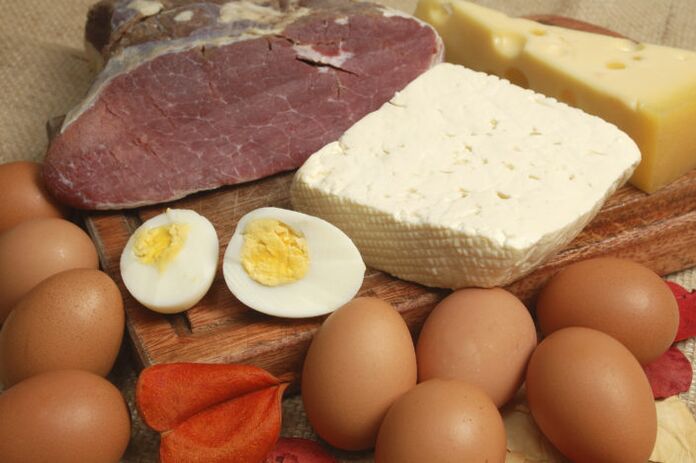Keto diet.Ketogenic diet, what is the essence?What are the results of the keto diet and what are the reviews?How it works, is there any difficulty, what is the keto diet menu and whether it is harmful.

- Keto diet
- The keto diet is a low-carb, high-fat diet designed to fuel the body with ketone bodies.
Why is the ketogenic diet effective, what are the contraindications and reviews, what is the principle of action?What should be included in the keto diet menu and reviews from those who have lost weight?This is what we will discuss today.
How does the keto diet work?
When our diet contains fats, proteins and carbohydrates, our body receives energy from glucose.We get glucose from carbohydrates.Now that supermarkets are easily accessible, this is the most common type of food.But what happened at that time when carbohydrate products, such as cereals or bread, were not sufficient due to crop failures, habitat or seasonality?
The carcass was forced to obtain energy from fatty acids and proteins.You probably remember my video about running to lose weight - here it is - in it I looked at the process of obtaining energy through the oxidation of fatty acids.Now I will briefly remind you that all our organs that have mitochondria in tissue cells work perfectly on fatty acids.These are the cardiac muscle, the myocardium and skeletal muscles (the same ones that we pump in the gym) and smooth muscles.
However, our brain, which is 60% fat, does not lose weight;even long fasting does not cause significant harm to mental abilities.Why?The reason is that the blood-brain barrier (BBB) is a barrier that ensures the constancy of the brain's internal environment.It is he who does not let fatty acids pass through - not even outside (that's why the brain does not lose weight), but also inside.And the brain is unable to consume fatty acids as a source of energy.
However, the brain cannot run out of fuel, and nature has arranged that as a result of a diet that cannot provide sufficient amounts of glucose, the brain switches to an alternative source of fuel - so-called ketone bodies.
- Ketone bodies
Three substances are called ketone bodies
- acetoacetic acid (acetoacetate)
- beta-aminobutyric acid (hydroxybutyrate)
- acetone
These substances are formed in the liver from fatty acids and this process is called ketogenesis.Not much acetone is produced;our main fuel is beta-aminobutyric acid.This is what, for the most part, the central nervous system acts on during the period of absence of carbohydrates in the diet.

Is the keto diet bad or not?
Ketogenesis is a completely normal metabolic process and there is no need to be afraid of it.All fears arise from the fact that the state of ketosis - when the body works on ketone bodies - is often confused with pathological acidosis that requires urgent intervention.But these things are different and now let's discuss a little what the essence is.
Ketoacidosis
What is it - ketoacidosis.It is almost the same as ketosis, but when it is not caused by a lack of glucose due to a lack of carbohydrates, but by a lack of insulin.I remember that our most important hormone, insulin, is a transporter.This is our carrier that knows how to transport glucose across the cell membrane.
When there is a lot of glucose, but there is no insulin or it does not perform its functions, the cell, just as in the case of a carbohydrate-free diet, begins to experience energy hunger.As a result, the body produces a bunch of hormones that can break down fat (lipolytic, in this case they are called counterinsular) and the liver begins to produce ketone bodies from fatty acids.So what's going on?
There is a lot of undigested glucose, there are also a lot of ketone bodies and the kidneys try to get rid of excess ketones and glucose, which causes dehydration - so-called osmotic diuresis.As a result of diuresis, electrolytes are eliminated - and you remember this is very, very bad in this video, even two - the electrolyte balance shifts towards acidification and as a result this very ketoacidosis develops.all of this requires urgent hospitalization, as the patient can move his horse easily.
It is absolutely clear that this situation is only possible in two cases
- Type 1 diabetes, when the pancreas does not produce insulin
- Dehydration - diarrhea, vomiting, use of diuretics.
In other words, if you are healthy and do not have type 1 diabetes, you do not need to be afraid of ketoacidosis.In your case, the nervous system will work perfectly with ketone bodies.
So how to use the keto diet
Firstand the most important thing is to enter a state of ketosis.And this is one of the most difficult tasks.As in most cases - remember I talked about homeostasis - people eat carbohydrate-containing foods for the first time decades ago - this will be a stress on the body.The carcass is not used to this and you will not enter a state of ketosis in a day or two.This takes time.First, the body will consume the remaining glucose and glycogen.It will then attempt to produce glucose from amino acids, glycerol and lactic acid using gluconeogenesis.And only when it becomes completely impossible for him to start the process of ketogenesis and with a creak begins to drag the nutritional system of the central nervous system onto new tracks.Remember: the carcass really does not like disturbances in homeostasis and resists as best it can.
It's the first time that's the hardest - you get annoying, angry, you have no strength, your brain refuses to work, your head feels dizzy - and a bunch of other delights.And the duration of this condition is different for each person, but it can last up to two or three weeks.
Second.To enter ketosis, you need to cut carbohydrates or keep them to a minimum – and this is another difficulty.There are organs that cannot use fatty acids or ketone bodies for energy.They need glucose and only glucose - this is the intestinal epithelium, the vascular endothelium, the lens of the eye, the adrenal cortex, something else - I don't remember.So you can't leave them without glucose.The carcass will obtain glucose for them through gluconeogenesis, either from the muscles or from a minimum of carbohydrates provided with food.But that's the point - remember homeostasis - the desire to maintain balance at any cost - getting into ketosis is hard, but getting out of it is as easy as shelling pears.And then hello to the fat deposits on the sides of your back.
Third— to enter ketosis you need to eat a lot of fat and in no case overdo it with proteins!!!!And this is also very difficult to control.Because if there is an excess of protein in the diet - with the help of the same gluconeogenesis, the carcass will immediately produce glucose from it - and you will again come out of this hard-won state of ketosis.If there is little protein, I will gradually lose muscle.And it's very, very difficult for a beginner to find that balance.With fats, everything is simple - 80% of the diet should consist of fats.
Room- difficulty in assessing whether we have entered ketosis or not.
- Testing for the presence of acetone in urine with strips does not make sense.We can be in ketosis and there will be no acetone in our urine.
- Blood analysis using a glucometer with special strips for ketone bodies is possible, but these strips are not cheap at all.
- Finally, there are special devices to detect acetone in breath.They were invented for epileptics because the ketogenic diet is good for dealing with epileptic seizures – but they also cost about $100.
And lastly, if you decide to try the keto diet, how do you plan your diet?
- protein - 1.5-2 grams per body weight.This is conditional.
- The rest are fats.

What foods are suitable for the keto diet?
- eggs with yolk
- all cheese
- fat cottage cheese
- cream
- salon
- pork
- nuts
- salmon
- trout
- salmon
- ram
















































































